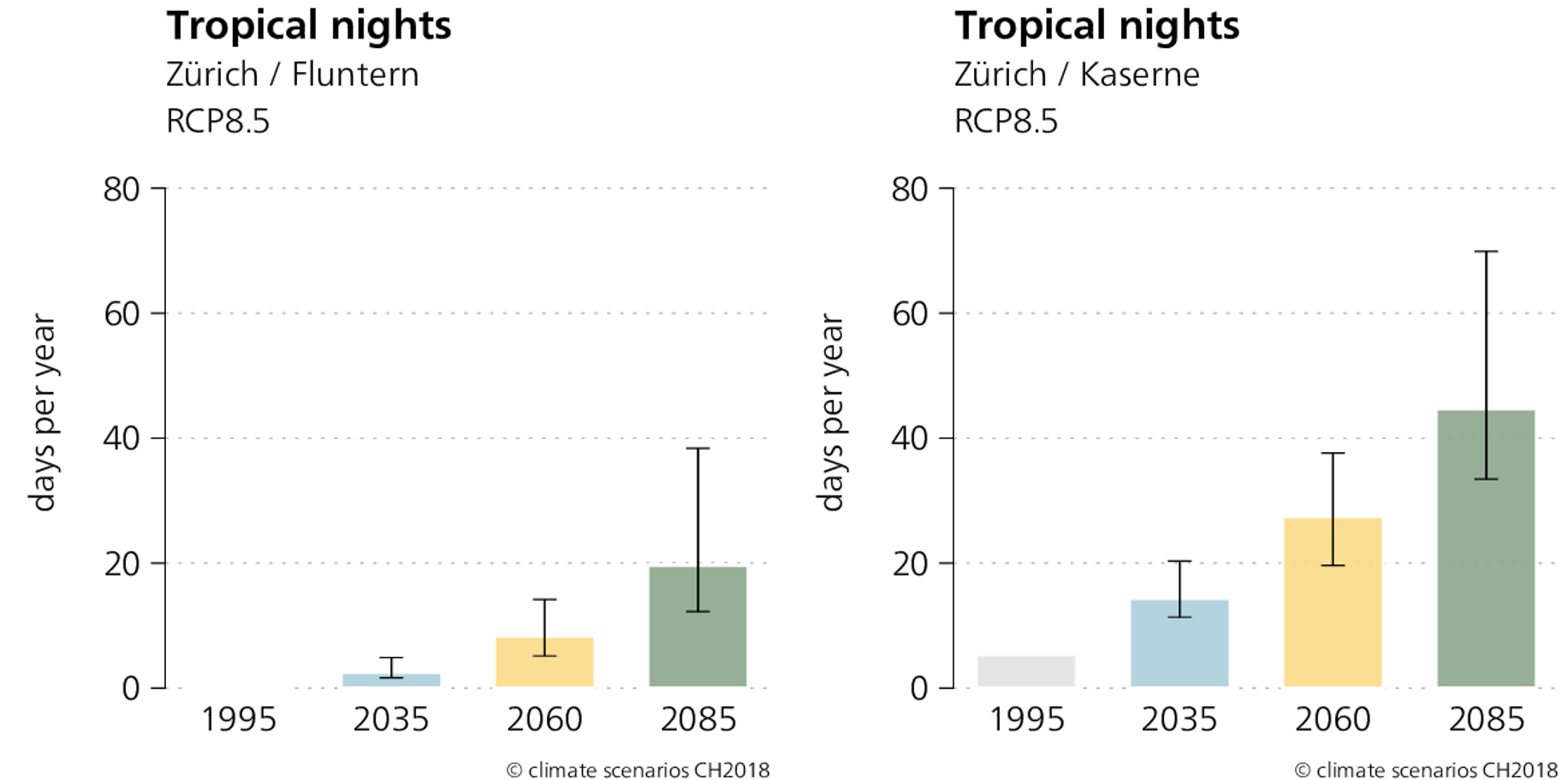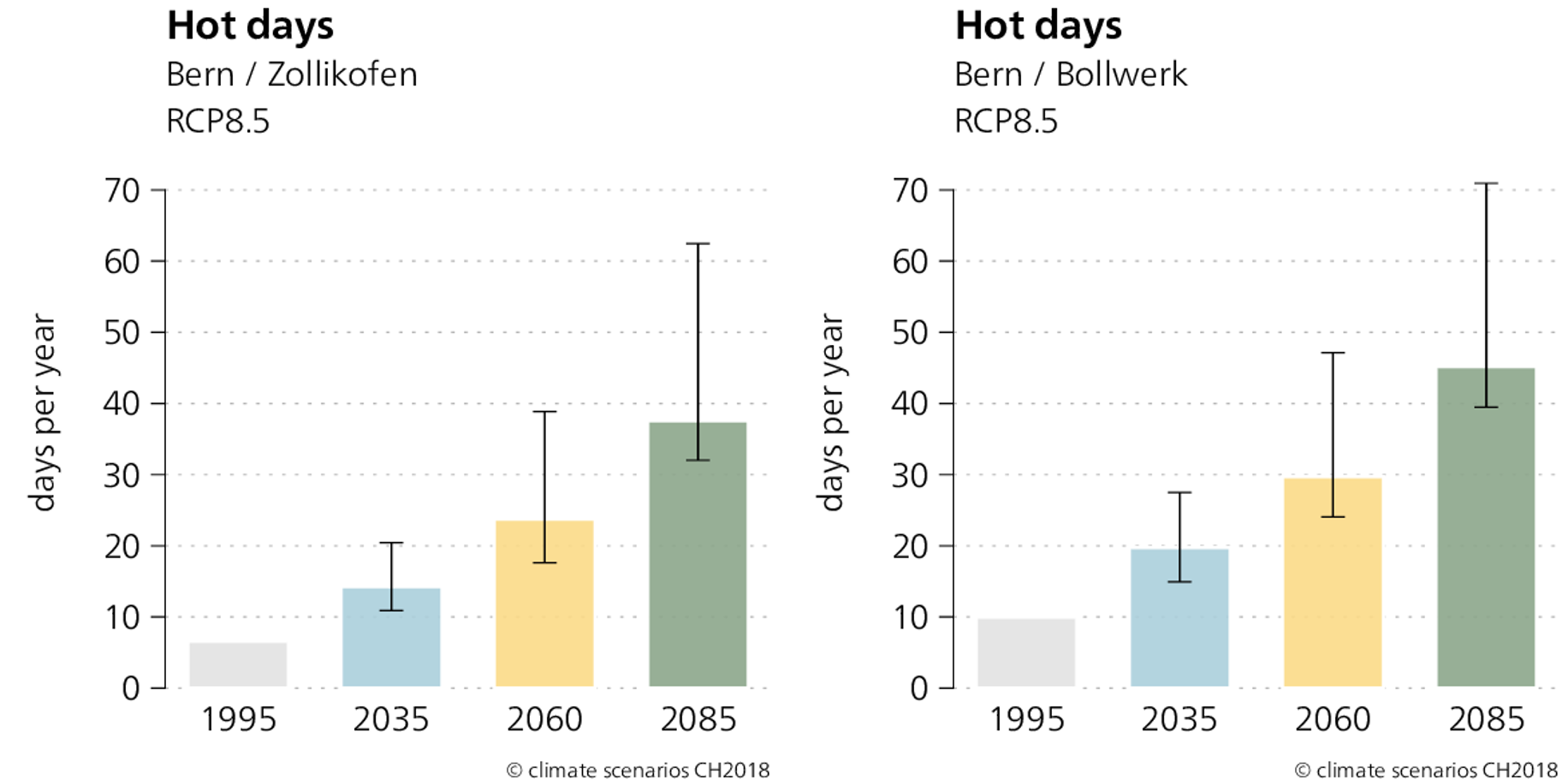Cities warm up faster and cool down slower at night than the surrounding areas due to the urban heat island effect. To better estimate future climatic conditions in cities, the current Swiss climate scenarios (CH2018) were extended with heat indicators for selected Swiss inner cities.
The content of this page is based on the Swiss climate scenarios CH2018. In the meantime, the new Swiss climate scenarios have been published as part of the Climate CH2025 project. They expand on the previous results with longer measurement series and information from new, high-resolution climate models. The qualitative statements remain unchanged from the CH2018 climate scenarios, but the quantitative estimates have changed. It is recommended that the results of Climate CH2025 be used.

The urban heat island
The urban heat island is a typical feature of the urban climate. It describes the difference in air temperature between the warmer city and its cooler surrounding area. The effect is particularly pronounced during clear weather conditions with little wind and intense solar radiation, i.e. especially during hot spells. The temperature difference between the city and the surrounding rural area can reach up to 6 degrees in Switzerland.
The temperature difference between urban and rural areas is especially pronounced during nighttime. During daytime, the differences are usually smaller and the air temperature in cities is often only slightly elevated.
Heat stress in cities (day- and nighttime) will continue to increase in the future due to climate change. Thus, information on future climatic conditions in cities is highly relevant to develop adaptation and mitigation measures to adapt to the urban heat island effect and to protect people in the city from the heat.
Heat indicators for five Swiss cities
The CH2018 climate scenarios show that temperatures are expected to further increase in the future. Based on observational data and the CH2018 climate scenarios heat indicators were calculated for selected cities using a statistical method. For the city centers of Basel, Bern, Geneva, Lausanne and Zurich, the indicators tropical nights, summer days and hot days are available via the CH2018 web atlas under "Indicators at stations". For the city stations, select the station at the bottom of the list with the addition "CITY CENTER".
How can we mitigate the urban heat island effect?
Various urban planning and architectural measures can help to reduce the urban heat island effect (see Pilot Program Adaptation to Climate Change). Sufficient green and water areas as well as fresh air corridors, green roofs and walls, light roof surfaces with high reflectivity, avoiding concrete in construction, promotion of cool building materials such as wood, and adapting road surfaces are only some of the measures that can reduce the heat in the city. Building architecture and technology as well as the energy demand of buildings can today be optimally planned for a warmer climate in the future. For this purpose, Switzerland-wide climate data sets for various periods in the future are available for building simulations (see "Climate-adapted construction - Foundations for the future").
Further information
Last modification 16.10.2025









